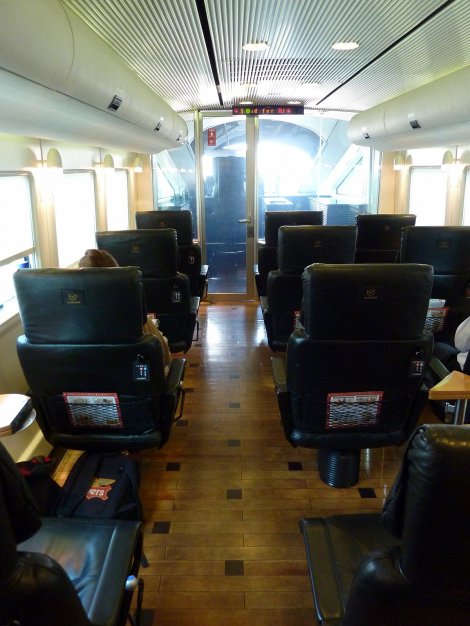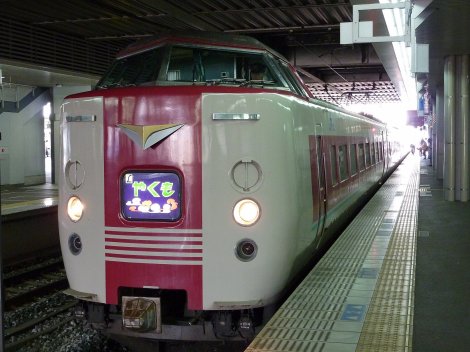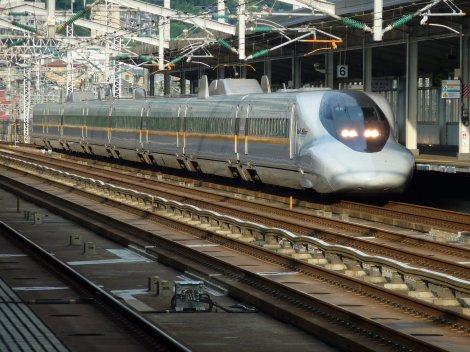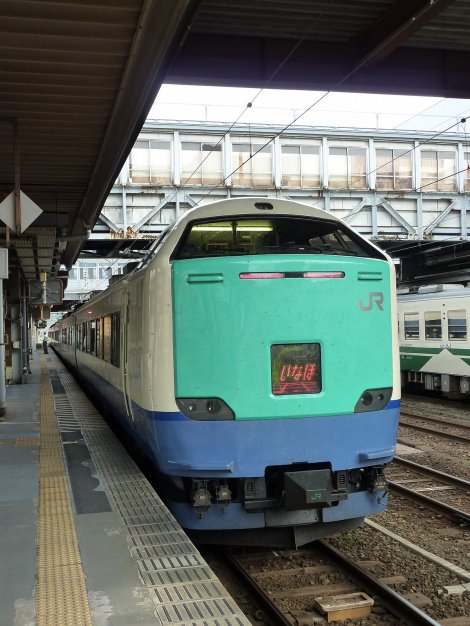Japan is the most amazing place in the world when it comes to trains. Trains of all shapes, sizes and speeds serve almost every town and city in this densely populated nation of islands, in fact the first identifiable thing I saw on Japanese soil as I was flying into Tokyo was a train. They come in all colours of the rainbow and range from the ultra modern to the ancient (well, early 1970s). The trains share 3 things in common; they are meticulously clean, impeccably maintained, and run on time with alarming constancy.
Rail-fanning (gunzelling, call it what you will…) seems to be a national pastime of the Japanese, but it’s not clear if the national love of trains begat the interesting rail network, or the superior rail network has generated the interest. Railway companies run special trains with special rolling stock for school holidays. It seems that everywhere you go, people are photographing trains, which makes it a very relaxing place to take photos; no skulking around on a platform, whipping the camera out at the last moment, worried that some officious little railway employee will try to move you along. At worst, the Japanese will ignore you and at best, they will advise of where you could get a better shot!
Japan brought us the world’s first “Bullet Train”, with the 0 Series Shinkansen commencing operations in 1964. These trains revolutionised railway design and travel, with early Shinkansen achieving a service speeds of up to 210 km/h and the current E5 & E6 series achieving a service speed of up to 320 km/h on the Tōhoku line. The name Shinkansen literally translates to “New Trunk Line”.
The Shinkansen lines are as follows:
- Tōhoku Shinkansen: Tokyo – Shin-Aomori. Operated by JR East with E2, E3, E4, E5 & E6 series trains.
- Akita Shinkansen: Akita – Morioka (combines with Tohoku Shinkansen between Morioka and Tokyo). Operated by JR East with E3 & E6 series trains.
- Yamagata Shinkansen: Tokyo – Shinjo. Operated by JR East with E3 series trains.
- Jōetsu Shinkansen: Tokyo – Niigata. Operated by JR East with E2 & E4 series trains.
- Nagano Shinkansen: Tokyo – Nagano. Operated by JR East with E2 series trains.
- Tōkaido Shinkansen: Tokyo – Shin-Osaka (some through running to Sanyo Shinkansen). Operated by JR Central with 500, 700 & N700 series trains.
- Sanyō Shinkansen: Shin-Osaka – Hiroshima – Hakata (some through running to Tokaido & Kyushu Shinkansen). Jointly operated by JR Central, JR West & JR Kyushu with 500, 700 & N700 series trains.
- Kyushu Shinkansen: Hakata – Kagoshima-Chuo (some through running to Sanyo Shinkansen). Jointly operated by JR West & JR Kyushu using 800 & N700 series trains.
As well as fast, sleek Bullet Trains, Japan has a vast array of other trains. From the “White Sonic” 883 series baby bullet trains to the ancient 381 series tilting train from 1972, from the 485 series Tsugaru EMUs with their animated LED headboard, to the battery/diesel hybrid E200 railcars, there is almost every imaginable shape, size and style of train operating.
Japan’s conventional trains run on Cape Narrow Gauge (3’6″ – 1067mm) whilst Shinkansen lines are Standard Gauge (4’8½” – 1435mm). Shinkansen lines are mostly exclusively for the use of bullet trains, with completely grade separated track. The line between Akita and Morioka is dual gauge with level crossings, shared with conventional trains and bullet trains. In this section, Shinkansen trains are restricted to 130 km/h.
Conventional trains are defined as Rapid (stop at very few stations), Limited Express (stop at only major stations), Ordinary Express (stop at selected stations) and Local (stop at all stations).
Japan has several railway companies:
- JR Hokkaido – Operates trains on the island of Hokkaido and some services from Hokkaido to Osaka, Amori and Tokyo
- JR East (map) – Operates services within and to the north of Tokyo on the island of Honshu, also south to Yokohama, including the Tōhoku, Yamagata, Jōetsu & Nagano Shinkansen lines.
- JR Central – Operates services south of Yokohama to Osaka including the Tōkaidō Main Line and Tōkaidō Shinkansen.
- JR West (map) – Operates services south of Osaka on the island of Honshu, as well as the Sanyō Main Line and Sanyō Shinkansen
- JR Shikoku – Operates services on the island of Shikoku
- JR Kyushu (map) – Operates services on the island of Kyushu, Kyushu Shinkansen and the JR Beetle hydrofoil to Busan in South Korea
- Many small private railways
If you visit Japan, you must consider purchasing a JR pass. These passes allow unlimited travel on all JR opearted trains in the selected region (or the whole country depending on the pass selected). The passes are not valid on private railways or NOZOMI and MIZUHO Shinkansen trains on the Sanyo line (other Shinkansen are ok). A voucher for a pass must be purchased prior to arriving in Japan, and exchanged with a voucher at one of the stations indicated in red on this map. More information on JR passes is available at the Railplus website (where you can also purchase an exchange voucher for a pass).
If you’re wondering if purchasing a JR Pass is worth it, consider the cost of a return ticket from Tokyo to Hiroshima by Shinkansen is around A$395. The cost of a 7 day pass for all of Japan is A$315. That figure speaks for itself. If you can afford the extra 25%, I recommend buying a “green” (first class) pass. All trains are comfortable in both standard and green class, but you are almost guaranteed a seat in green class. Plus, it is nice to be able to swagger into green class, especially when you’re a scruffy, sweaty tourist in jeans and a t-shirt and your fellow passengers are immaculately dressed businessmen.

The Green Car on a White Sonic 885 series EMU. The window at the front of the car looks into the Driver’s cab.
Japanese Railway Tips:
- When waiting for a reserved seat train, look for your car number on platform signs. There will be markings on the platform indicating where to stand. This is particularly important for Shinkansen trains, which are up to 16 cars long and may only stop for 60 seconds.
- All trains are non-smoking, except for some Shinkansen trains which have designated smoking areas.
- On trains with mixed level cars (some single deck and some double deck) such as E531 and 223-5000 series, the double deck cars are generally green (first class) cars.
- Make sure you sit in your allocated car on reserved seat services. Some trains split en-route, and if you’re in the wrong car, you may find yourself heading for Akita instead of Shin-Aomori or Izumo-shi instead of Takamatsu.
There is too much to put in a blog entry; I could go on and on and on about Japan’s remarkable railway system. If you only make one international journey as a Rail Tourist, it has to be Japan. All I can recommend is buy a 14 day JR system wide pass, take a camera and a dozen memory cards and go nuts. Travel, explore, enjoy.




